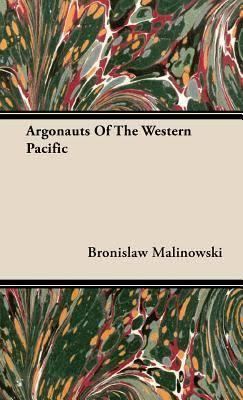7.4 /10 1 Votes
Language English Media type Print OCLC 647026285 | 3.7/5 Goodreads Publication date 1922 Originally published 1922 | |||||||||||||||||||||||||||||||||
 | ||||||||||||||||||||||||||||||||||
Series Studies in economics and political science, no. 65. Publisher London, G. Routledge & Sons; New York, E.P. Dutton & Co. Similar The Sexual Life of Savages in North Western Melanesia, Coral Gardens and Their Magic, Sex and Repression in Savage Society | ||||||||||||||||||||||||||||||||||
Argonauts of the Western Pacific, subtitled An account of native enterprise and adventure in the Archipelagoes of Melanesian New Guinea, is a 1922 ethnological work by Bronisław Malinowski, which has had enormous impact on the ethnographic genre. The book is about the Trobriand people who live on the small Kiriwana island chain northeast of the island of New Guinea. It is part of Malinowski's trilogy on the Trobrianders, including The Sexual Life of Savages in North-Western Melanesia (1929) and Coral Gardens and Their Magic (1935).
Contents
Overview
The book consists of twenty-two chapters divided into six distinct sections. General summaries of each section are included below.
Development
Argonauts of the Western Pacific developed from anthropological research which Bronislaw Malinowski described as "off the verandah". Unlike the armchair anthropology of previous researchers, this method was characterized by participant observation: informal interviews, direct observation, participation in the life of the group, collective discussions, analyses of personal documents produced within the group, self-analysis, results from activities undertaken off or online, and life-histories.
Impact
Considered the first modern ethnography, Argonauts of the Western Pacific redefined the ethnographic genre. Adam Kuper, in his seminal 1973 book on British social anthropology, begins his analysis with Malinowski's status as the founder of the discipline:
"Malinowski has a strong claim to being the founder of the profession of social anthropology in Britain, for he established its distinctive apprenticeship -- intensive fieldwork in an exotic community."
Many other anthropologists also trace the fieldwork mandate back to Malinowski, including Murray Wax:
"In the final analysis, the major credit for discovering the technique of intensive personal fieldwork among a single people must go to Bronislaw Malinowski (1884-1942). His researches among the Trobriand Islanders during the years 1916-18 yielded a series of epochal volumes which revolutionized the content and practice of anthropology."
Today, Argonauts of the Western Pacific is the archetypal account of anthropologists' "following the people" method of collecting information for a multi-sited ethnography.
